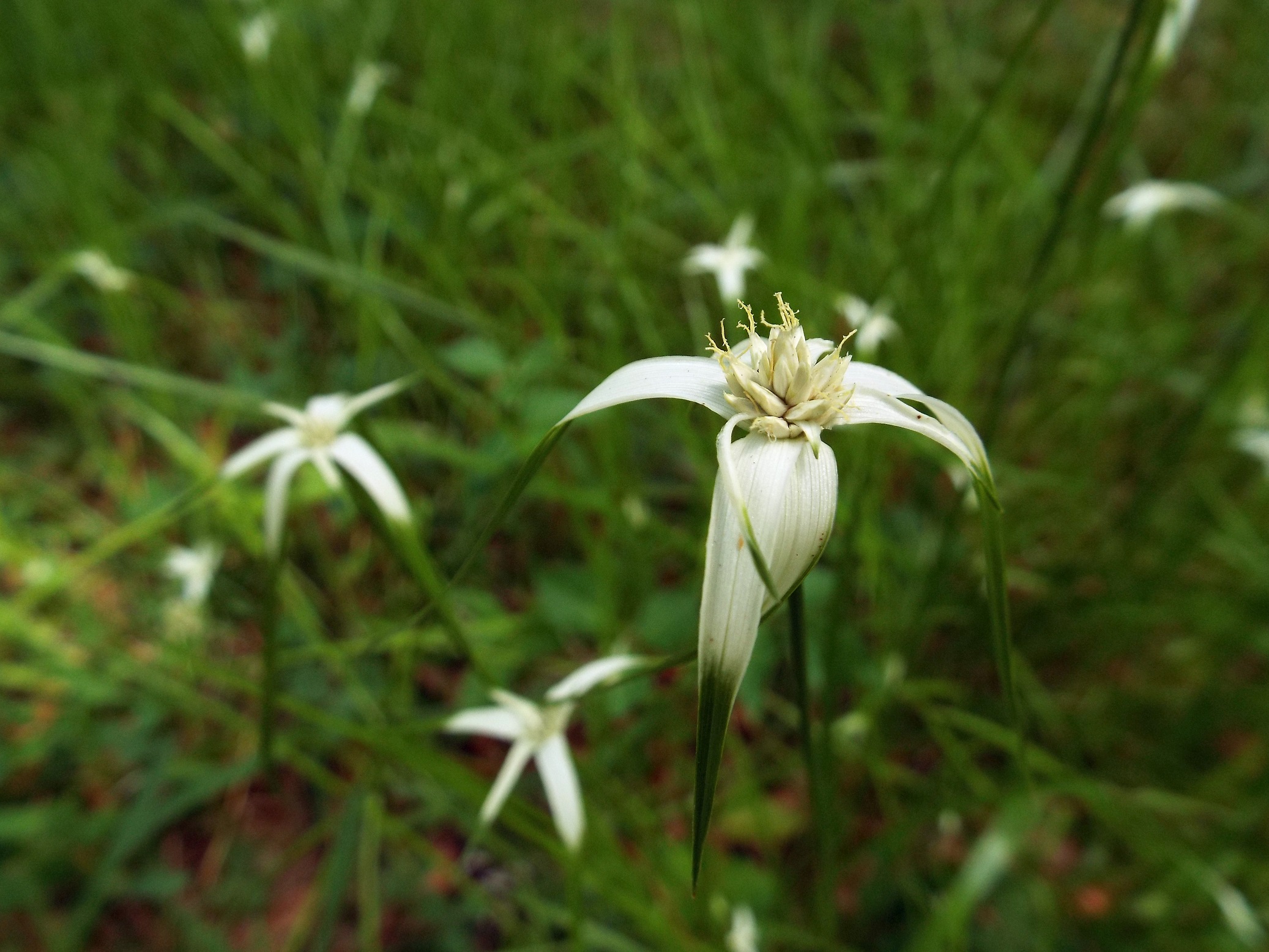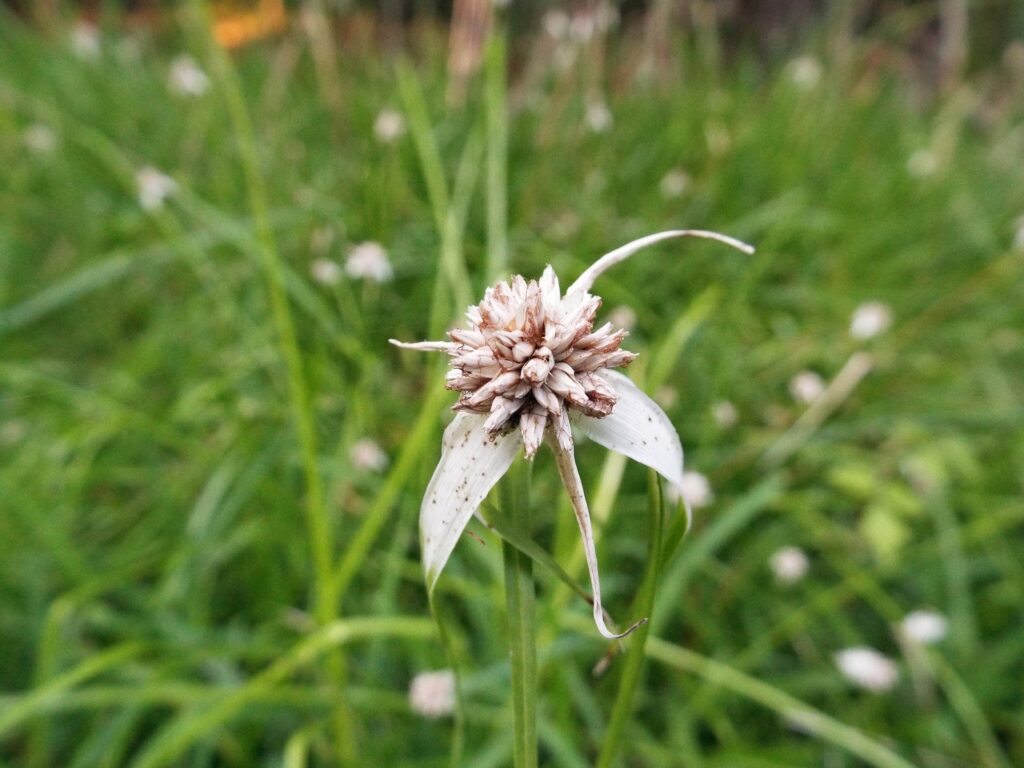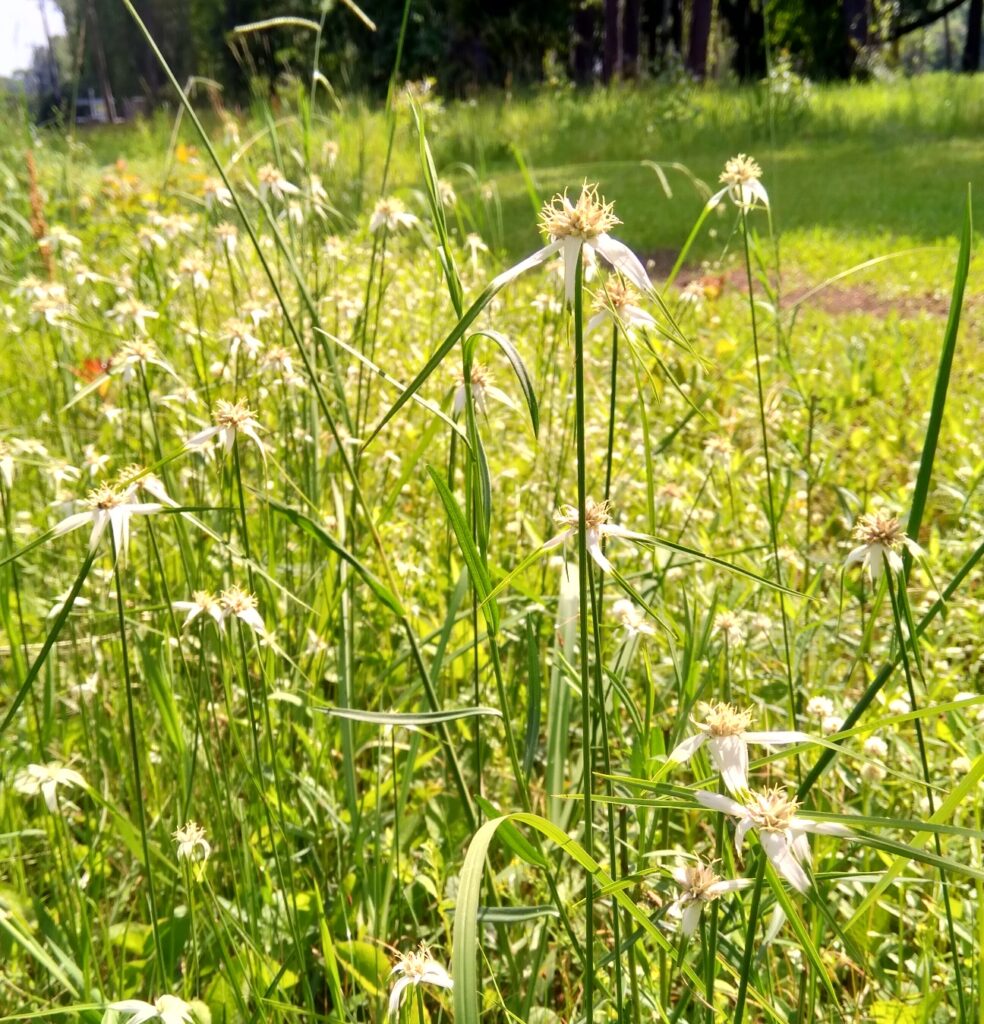


This week for Flora and Fauna Friday, we’re looking at grassy wetland plant whose appearance betrays its heritage. This week we’re talking about the White-topped Sedge (Rhynchospora colorata).
The White-topped Sedge is a resident of wet meadows, ditches, and other open shallow wetlands. (It’s even growing in the ditches across the street from the EIOLT office.) It grows in dense strips or clumps that reach about 2 feet tall. In late spring, the Sedges bloom producing a small cluster of white flowers ringed by a pale corona of long, variegated bracts. Bracts are the leaves found just below a flower. In the White-topped Sedges, these bracts are up to 6 inches long, white at the base, and green at the tip. They form a whorl beneath the true flowers where they resemble petals, much like the bracts of Dogwood or Hydrangea flowers.
White-topped Sedges are interesting because they’re a member of the Sedge family, Cyperaceae. Sedges are an incredibly diverse group of plants that are closely related to, and strongly resemble, Grasses. Just like Grasses, Sedges are rather plain and their flowers mostly inconspicuous. The white-topped Sedges are an exception. They’ve developed a showy flower unlike any of the members of their family. These white bracts standout like a beacon to insects and attract pollinators to the plants. As the pollinators move from flower to flower, they distribute pollen between flowers. Almost all the other members of the Sedge family rely on wind pollination, making the White-topped Sedge’s adaptation unique among Sedges.